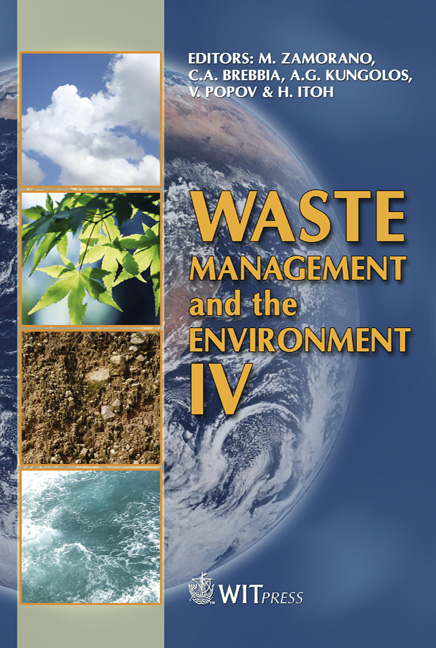Occupational Bioaerosol Exposure In Composting Plants
Price
Free (open access)
Transaction
Volume
109
Pages
7
Page Range
911 - 917
Published
2008
Size
273 kb
Paper DOI
10.2495/WM080921
Copyright
WIT Press
Author(s)
D. Forestier, P. Thoumelin, B. Efremenko & C. Arfi
Abstract
The worldwide waste treatment industry VEOLIA ENVIRONNEMENT carried out a bibliographical review of the occupational exposure to bioaerosols in composting plants, which is based on a literature survey conducted since 1993 by the French Health and Waste Network. Composting is an aerobic biological waste treatment. Bioaerosol released from composting contains mesophilic and thermophilic microorganisms. Bacteria, fungi, particularly Aspergillus fumigatus, and thermophilic actinomycetes are the most frequent microorganisms detected in the ambient air of composting plants. These microorganisms are known to be allergenic agents. Viruses and parasites have never been investigated in the air of composting plants. Microorganism concentrations in the air vary with the seasons, the type of composting process and the waste composted. Maximum microorganism concentrations (103-105 cfu/m3) are detected in the loading area and during waste crushing and windrows turning. Mycotoxins produced by Aspergillus fumigatus or Penicillium that are present in the ambient air of some composting plants are correlated with high concentrations of fungi spores. High concentrations of Gram negative bacteria (103 cfu/m3) (Klebsiella, Proteus, Xanthomonas, Serratia…) have sometimes been detected in the ambient air of composting plants. Endotoxin concentrations in the air range from 0,3 to 5,9 ng/m3 depending on the season. Mean dust concentrations reached 3,1 mg/m3 but dust concentration peaks have been measured during some handlings. Dust, endotoxins and (1-3)-β- D glucan concentrations are moderately correlated in one study. Therefore it could be interesting to quantify dust concentration as an indicator of bioaerosols exposure. Considering the variability of exposure factors, additional exposure studies would be helpful to better assess the biological risk regarding specific processes and work organisation in order to optimize preventive measures towards bioaerosols occupational exposure in composting plants. Keywords: occupational exposure, bioaerosol, composting, allergenic, workers.
Keywords
occupational exposure, bioaerosol, composting, allergenic, workers.





